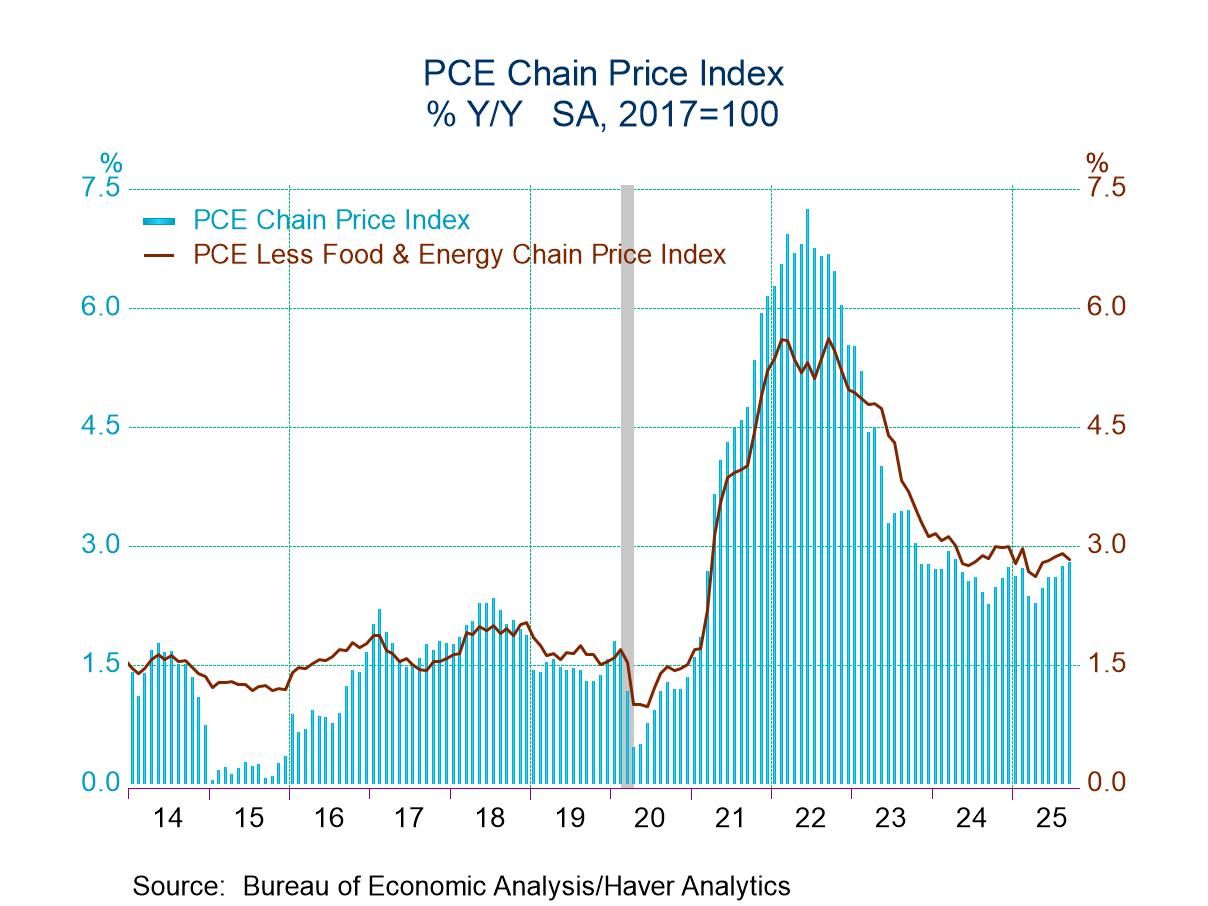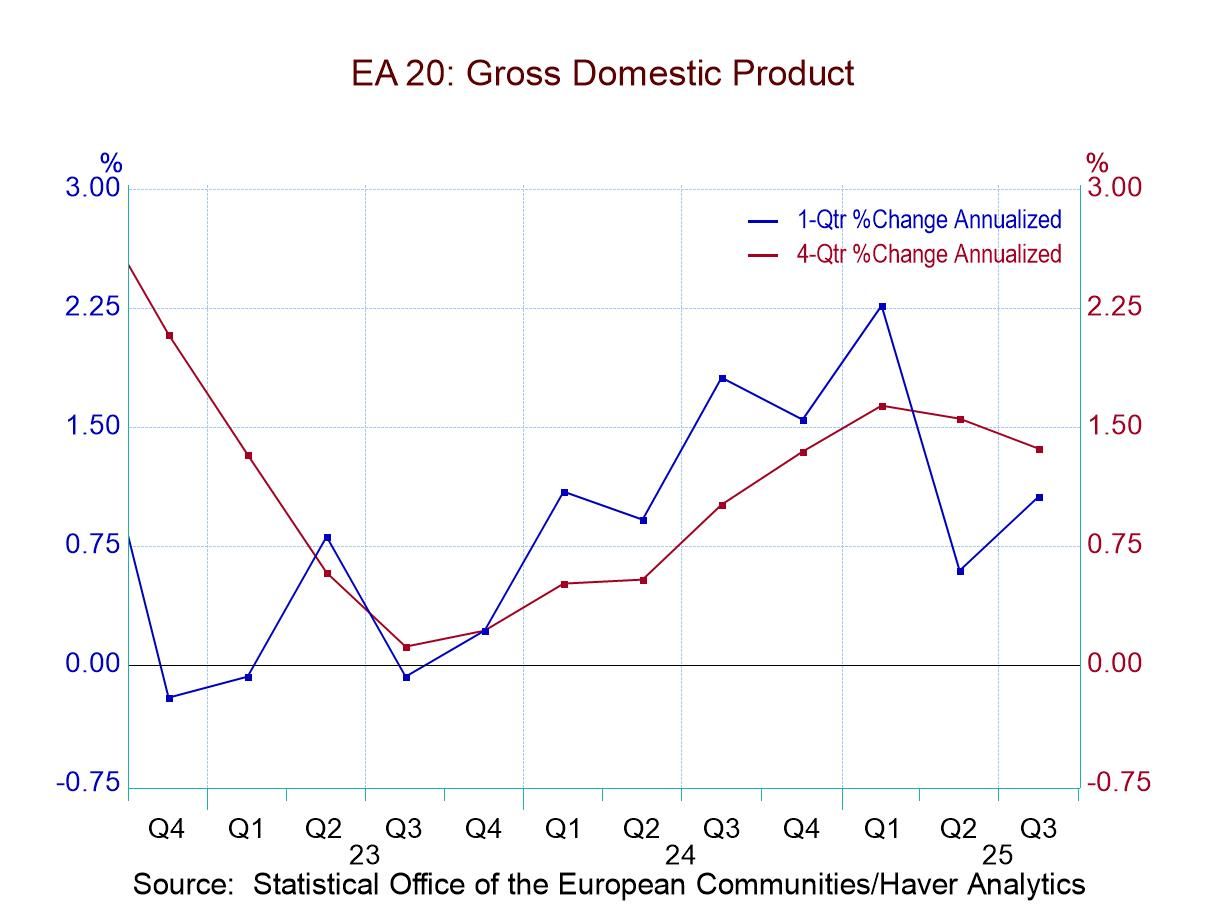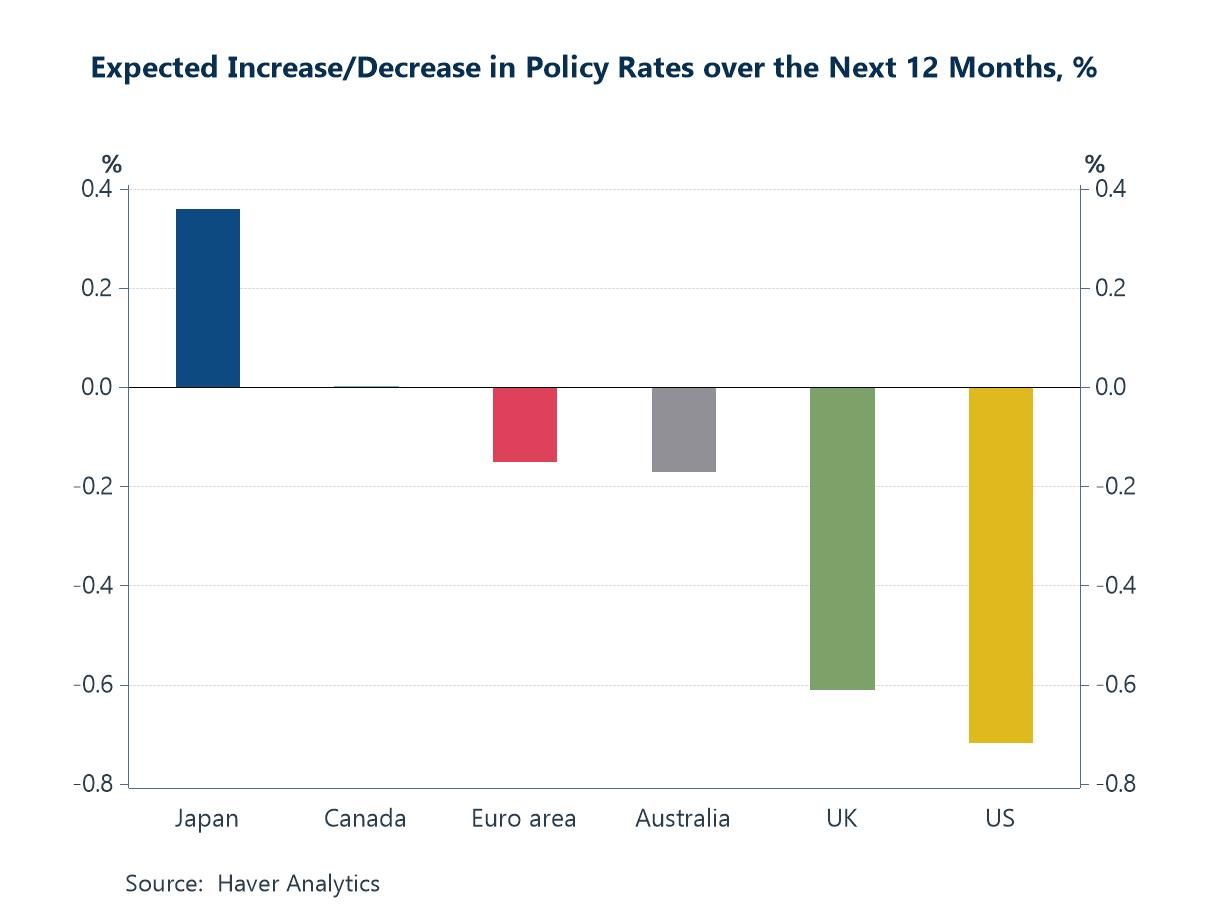Japan’s IP Is Still Waffling and Weak
Japan's industrial production continues to be weak with output falling by 0.2% in May after falling by 1% in April and coming up lame - at flat - in March. Sequential growth rates are not telling an upbeat story either, with 12-month industrial production lower by 0.8%; over six months the decline is only 0.2% at an annual rate, but then over three months the annual rate of decline is 4.6%.
Manufacturing shows similar weakness to the trend for overall industry, but the three-month growth rate is at -5.7% at an annual rate.
Two key industries for Japan, textiles and transportation, show up with the declines over all three horizons. And for transportation, the decline over the last three months is 11.1% at an annual rate.
Manufacturing industries in Japan show a great deal of variation with consumer goods output on a more or less accelerating path, growing 3.2% over 12 months and then up to a 12% annual rate over three months. Intermediate goods output is in a significant decelerating phase, falling 3% over 12 months, falling at a 1.2% annual rate over six months and then stepping up the pace of decline to -6.6% at an annual rate over three months. Investment goods show a good deal more life, falling only 0.1% over 12 months, then growing at a 3.9% annual rate over six months and surging at a very vibrant 8.3% annual rate over three months.
Mining activity in Japan is recovering, showing a 6.8% annual rate decline over 12 months, a 5% annual rate decline over six months, and an 11% annual rate increase over three months.
Utilities output from gas and electric utilities shows a decline of 1% over 12 months, growth of 2.3% over six months. and then output declined at a 19.2% annual rate over the last three months.


I plot Japan's output in terms of output levels rather than in terms of growth rates because growth rates are so specific to comparison with the particular point in time. I think looking at the levels of industrial production for Japan clarifies its weakness a lot more because you can see that output levels have generally been declining for quite a long time without a significant improvement; that includes some recent weakening from what we're already relatively weak levels of output.
In addition to these trend issues, is the fact that the Bank of Japan continues to fight inflation, domestically. Japan also is dealing with its two main trade partners and there are special issues. China, its largest trade partner, has been struggling trying to reinstate growth in an economy that has been hamstrung by an overbuilt property market and other challenges. Japan’s second biggest trading partner, the United States, continues to log growth, but tariffs are being threatened and tariffs that are relatively high. Japan is having a hard time coming to terms with U.S. demands. Japan has always been willing to play ball with the U.S. on tariff issues and in terms of setting up things like orderly marketing agreements to limit access to the U.S. market while still preserving access of some sort. And while we don't know how the Trump tariff negotiations will end (and that is partly by his design), at the moment Japan seems to be facing the potential for some relatively large tariff barriers, something that has thrown a pall across the domestic economy.
In the past, the U.S. has used exchange rate movements and threats in order to try to curtail competitive threats from Japan. Those tactics largely failed because Japanese firms held on firmly to their market share and were willing to increase efficiency and productivity in various ways including moving production out of Japan to offshore facilities where their competitiveness was even further enhanced. The U.S. program to push the yen up which resulted in the yen breaking the value of 100 and hitting an exchange rate at its peak of around 85 to the dollar did not redress the problems that the U.S. had with its trade deficit and in fact it may have deepened those problems by spreading Japanese manufacturing know how to Pacific Rim countries with lower production costs.
However, Japan has outsourced a lot, and it clearly is looking to maintain the domestic production that it still has. It's unclear how the recent Trump threats and tariffs are going to play out, especially at the time that the Pacific Rim is in play for geopolitical reasons and the U.S. needs a strong ally in the Pacific Rim. This is going to be an important relationship to watch.
Robert Brusca
AuthorMore in Author Profile »Robert A. Brusca is Chief Economist of Fact and Opinion Economics, a consulting firm he founded in Manhattan. He has been an economist on Wall Street for over 25 years. He has visited central banking and large institutional clients in over 30 countries in his career as an economist. Mr. Brusca was a Divisional Research Chief at the Federal Reserve Bank of NY (Chief of the International Financial markets Division), a Fed Watcher at Irving Trust and Chief Economist at Nikko Securities International. He is widely quoted and appears in various media. Mr. Brusca holds an MA and Ph.D. in economics from Michigan State University and a BA in Economics from the University of Michigan. His research pursues his strong interests in non aligned policy economics as well as international economics. FAO Economics’ research targets investors to assist them in making better investment decisions in stocks, bonds and in a variety of international assets. The company does not manage money and has no conflicts in giving economic advice.






 Global
Global